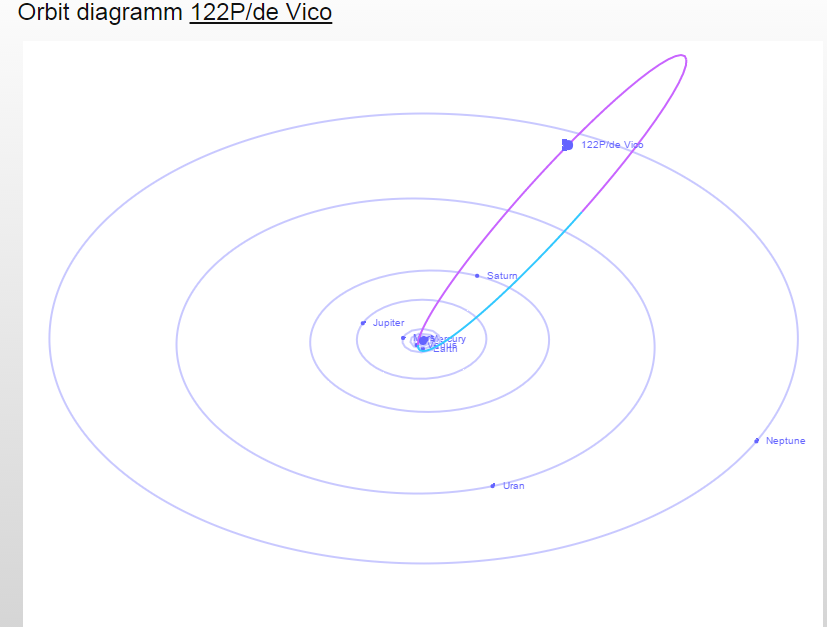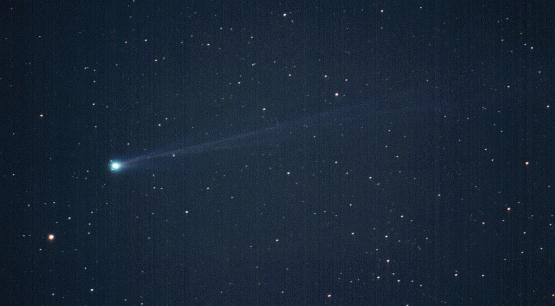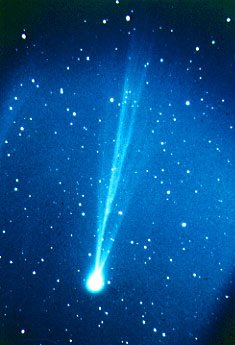Comet 122P/de Vico
Francesco de Vico (May 19, 1805, in Macerata – November 15, 1848, in London)
He was an italian astronomer and Jesuit Priest. He discovered six comet and one independently(C/1847 T1), including the periodical comets 54P and 122P; his most prolific year was during 1846 with 4 discoveries!
About the 122P, this comet with the initial designation of C/1846D1(or 1846 IV) was discovered on February 20, 1846 from Rome Observatory. He described it as fairly bright, with a substantial condensation and a tail. An independent discovery was made by William C. Bond (Harvard Observatory, Massachusetts) on February 26. The comet reached a maximum magnitude of about 5 by mid-March and then faded. It was last seen on May 20 by Bond.
At beginning, astronomers from Altona, Germany linked the comet de Vico with comet Bronsen, but after other calculations showed that the two are different; in fact, several orbits were computed with on uncertain orbital period between 69 to 75 years while Bronsen’s comet had a period of only 5 years.
In 1887, von Hepperger predicted the comet would next arrive at perihelion during the latter half of 1921. Searches revealed nothing. Buckley reinvestigated this comet's orbit in 1976 and concluded the orbital period was 76.30 years, indicating a perihelion passage in early 1922. But he said the uncertainly was still about 2 years.
During 1846 apparitions, in literature from several journals were reports a total of 137 observations in right ascension (α) and 133 in declination (δ) from several observatories around the world:
|
Observatory |
Observations in right ascension (α) |
Observations in declination (δ) |
|
Vienna(Austria) |
4 |
3 |
|
Cambridge(England) |
3 |
3 |
|
Altona(Germany) |
30 |
28 |
|
Berlin(Germany) |
8 |
8 |
|
Bonn(Germany) |
24 |
24 |
|
Hamburg(Germany) |
11 |
11 |
|
Mailand(Germany) |
1 |
1 |
|
Padua(Italy) |
9 |
9 |
|
Rome(Italy) |
1 |
1 |
|
Leiden(Netherlands) |
2 |
2 |
|
Cambridge(USA) |
25 |
24 |
|
U.S.Naval(USA) |
19 |
19 |
|
Total |
137 |
133 |
Three Japanese astronomers found this comet within minutes of each other around 1995 September 17.8. They were:
Yuji Nakamura (Suzuka, Mie) discovered it with a 20x120 binoculars. He estimated of 7m and coma of 2’.
Masaaki Tanaka (Iwaki, Fukushima) discovered it with a 25x150 binoculars. He estimated a coma of 5’ with a strong central condensation and 7.5mag.
Shougo Utsunomiya (Minamioguni, Kumamoto) discovered it with a 25x150 binoculars. He estimated a coma of 5’ diameter and central condensation.
Independent discoveries were also made by T. Seki (Geisei, Japan) on September 17/18 and D.Machholz, they estimated the magnitude as 5/6;
Preliminary orbital elements, from 39 observations Sept. 17-20, confirming resemblance to those of D/1846 D1 (1846 IV).
According to Hasegawa studies,it could be a link with the comet observed by Chinese on 1391, with a possible orbital period of 75.8 years. The comet appeared on May in Ursa Major.
For 1995 apparition where reported more than 500 observations of this comet with a maximum magnitude of 5-5.5 reached in early October.
Orbital Elements of comet 122P/de Vico
q: 0.6593AU
a: 17.6808AU
e: 0.962709
Orbital period: 74.35yr
Node: 79.626
Peri: 12.978
i: 85.3828


Oct 2 1995 19:03 UT 5min exp. hypabolic astrograph 160-mm f/3.3 (Takahashi epsilon 160).
Norio Namiki (Mt.Fuji,Japan)

Comet de Vico: 4 am September 20, 1995, 60cm Reflector at Geisei Observatory, Fuji color-transparency film 400,10-minute exposure, By Tsutomu Seki
